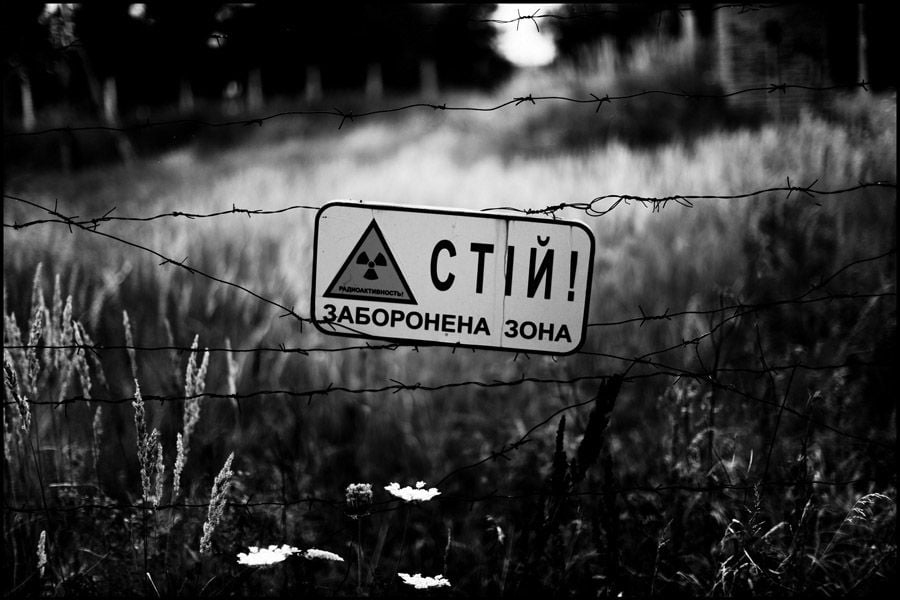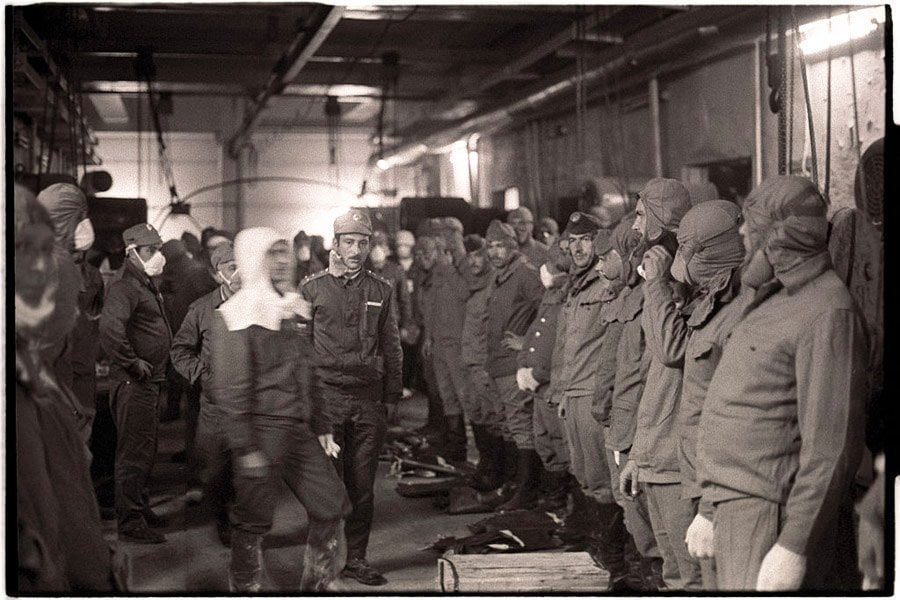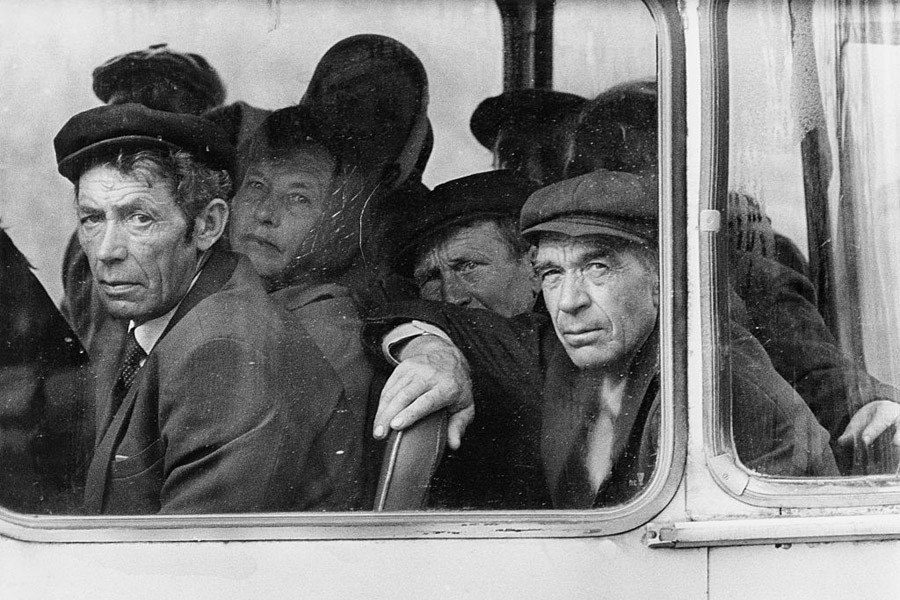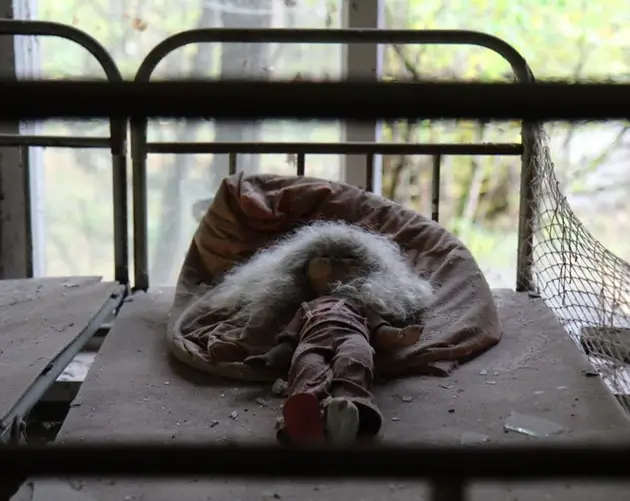After the nuclear meltdown in 1986, some 350,000 people evacuated what is now known as the Chernobyl exclusion zone. Most residents have never returned.
The epic nuclear meltdown of 1986 left an area of 1,600 square miles, known as the Chernobyl exclusion zone, totally uninhabitable for people. By some accounts, this area of Ukraine will remain abandoned of people for some 20,000 more years.
Just before its meltdown, the Chernobyl nuclear power plant served as a decent proxy for the state of the Soviet Union, considering the isolated plant used outdated, Soviet-era reactors with few safety features. It was thus only a matter of time before it failed entirely. On April 26 that's precisely what happened.
The nuclear plant was situated some 81 miles north of Kiev but there are regions in Kiev which today remain a part of the Chernobyl exclusion zone, illustrating just how pervasive and destructive its 1986 meltdown was.
The Disaster Of April 26, 1986
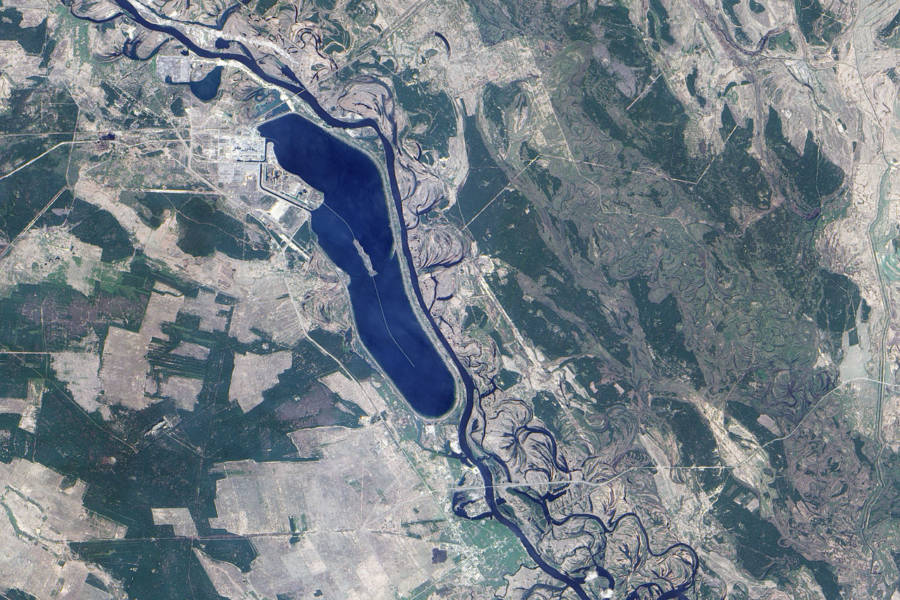
Wikimedia CommonsAn aerial view of where the reactor once was. The large body of water is the man-made cooling pond meant to manage the temperature of the plant.
The night before the Chernobyl disaster, the plant had a one-time shutdown for routine maintenance on reactor four planned. The maintenance, obviously, did not go according to plan. For starters, workers disabled all the equipment in the plant, including the mechanism that shuts down the plant in the case of a serious emergency.
Chernobyl's four reactors were different than most others worldwide. The Soviet-designed RBMK reactor, or Reactor Bolsho-Moshchnosty Kanalny meaning "high-power channel reactor," was water-pressurized and intended to produce both plutonium and electric power and as such, required an uncommon combination of water coolant and graphite moderators that made the reactor fairly unstable at low power.
What's more, the RBMK design didn't have a containment structure which is exactly what it sounds like: a concrete and steel dome over the reactor itself meant to keep radiation inside the plant even if the reactor fails, leaks, or explodes.
The rather inadequately trained personnel working on the Number 4 reactor late that night on April 25 wanted to see whether or not the reactor's turbine could operate emergency water pumps on inertial power once the rest of the systems were shut down.
Reactor 4 was then set at a power level so low that it became unstable. At 1:23 A.M. local time the engineers shut the turbine off on Reactor 4 and it consequently suffered a fateful power increase too high to handle. The emergency water-coolant to diffuse the high energy situation was deactivated and so without it, the reactor's power level spiked to unmanageable levels.
A subsequent chain reaction ended in a giant steam explosion. With the reactor core now exposed to the atmosphere, over 50 tons of radiation spilled into the air and wafted into the surrounding towns, soon to become the abandoned exclusion zone.
"There was a heavy thud," recalled plant worker Sasha Yuvchenko, who continued:
"A couple of seconds later, I felt a wave come through the room. The thick concrete walls were bent like rubber. I thought war had broken out. We started to look for Khodemchuk (his colleague) but he had been by the pumps and had been vaporised. Steam wrapped around everything; it was dark and there was a horrible hissing noise. There was no ceiling, only sky; a sky full of stars. I remember thinking how beautiful it was."
But soon, the true horrors of this disaster would reveal themselves.
Unimaginable Contamination Inside The Chernobyl Exclusion Zone

Wikimedia CommonsEntrance to the "zone of alienation," or the Chernobyl exclusion zone.
Sweden's radiation monitoring stations over 800 miles northwest of Chernobyl detected radiation levels 40 percent higher than standard levels just a day after the explosion.
Chernobyl continued to burn for ten days and the Soviet government scrambled to evacuate some 115,000 locals from the plant's surrounding areas. The Soviet government relocated another 220,000 people shortly after.
Nonetheless, many fell victim to the effects of radiation still present in the Chernobyl exclusion zone today. Perhaps most pervasive was the radiation of millions of acres of eastern European farmland which contributed to the spread of contamination across the region.
The nearby population blamed radiation poisoning for a spate of health issues and subsequent reports backed up their claims. For instance, a 1995 United Nations report stated that the disaster caused a 100-percent increase in cancer and leukemia in children. The Nuclear Energy Institute claimed Chernobyl resulted in about 4,000 cases of thyroid cancer, with some deaths occurring as late as 2004 — while the UN study argued that less than 50 deaths could be guaranteed to have resulted from the event's radiation exposure.
Indeed, by the year 2000, the World Nuclear Association noted that apart from an increase in thyroid cancers, the U.N. no longer attributed other area health consequences to lingering radiation. Instead, a 2005 United Nations report held that "the largest public health problem created by the accident" was what it did to the mental health of some 600,000 impacted persons.
Inside The Chernobyl Exclusion Zone Today
The Chernobyl exclusion zone was officially designated on May 2, 1986. This zone was initially closer to 19 miles wide to indicate the boundary in which radiation was simply too high for human habitation. A reevaluation in 1991 had the zone extended to encompass some 1,600 miles — which is how it remains today. Until 1995, areas in Ukraine continued to be evacuated as the far-reaching effects of contamination became better known.
The agency responsible for overseeing the Chernobyl exclusion zone does not, however, see to the confinement of the destroyed plant. The power plant has since been entombed in a sarcophagus and efforts to further contain it against radioactive leakage began in 2016.
After the explosion, all the trees in the Chernobyl exclusion zone turned bright red. The area is known now also as the Red Forest and has shown a startling resurgence in wildlife. Humans, however, stay clear.
Fortunately, there has been recent discussion to redraw the boundaries of the exclusion zone as it is believed the radiation is decreasing. Nonetheless, the area remains among the most radioactive in the world.
These days, Chernobyl continues to serve as a site of scientific interest. NASA, for instance, has taken to study the organisms that survived within Chernobyl's exclusion zone in the hopes of developing a radiation blocker for astronauts. Studying these fungi and other organisms, NASA says, could eventually help scientists learn to grow crops on other planets as well.
Meanwhile, some reports have circulated that Chernobyl may be transformed into a solar farm. In political decision-making circles, critics still point to the Chernobyl disaster when questions of nuclear power are brought to the fore as a way to provide cheap energy to a consistently growing global population.
Nevertheless, some people have continued to live inside the Chernobyl exclusion zone while others have returned to survey the wreckage and the passing of time. "I barely found my apartment," said former resident Zoya Perevozchenko upon returning three decades later. "I mean it's a forest now - trees growing through the pavement, on the roofs. All the rooms are empty, the glass is gone from the windows and everything's destroyed."
The photos above of the Chernobyl exclusion zone remind us just how fragile life — regardless of the ideologies or technologies that vow to protect or enhance it — really is.
After seeing the abandoned Chernobyl Exclusion Zone, read about what's keeping people from returning to Fukushima. Then, discover four nuclear testing sites that humans destroyed way worse than Chernobyl.

